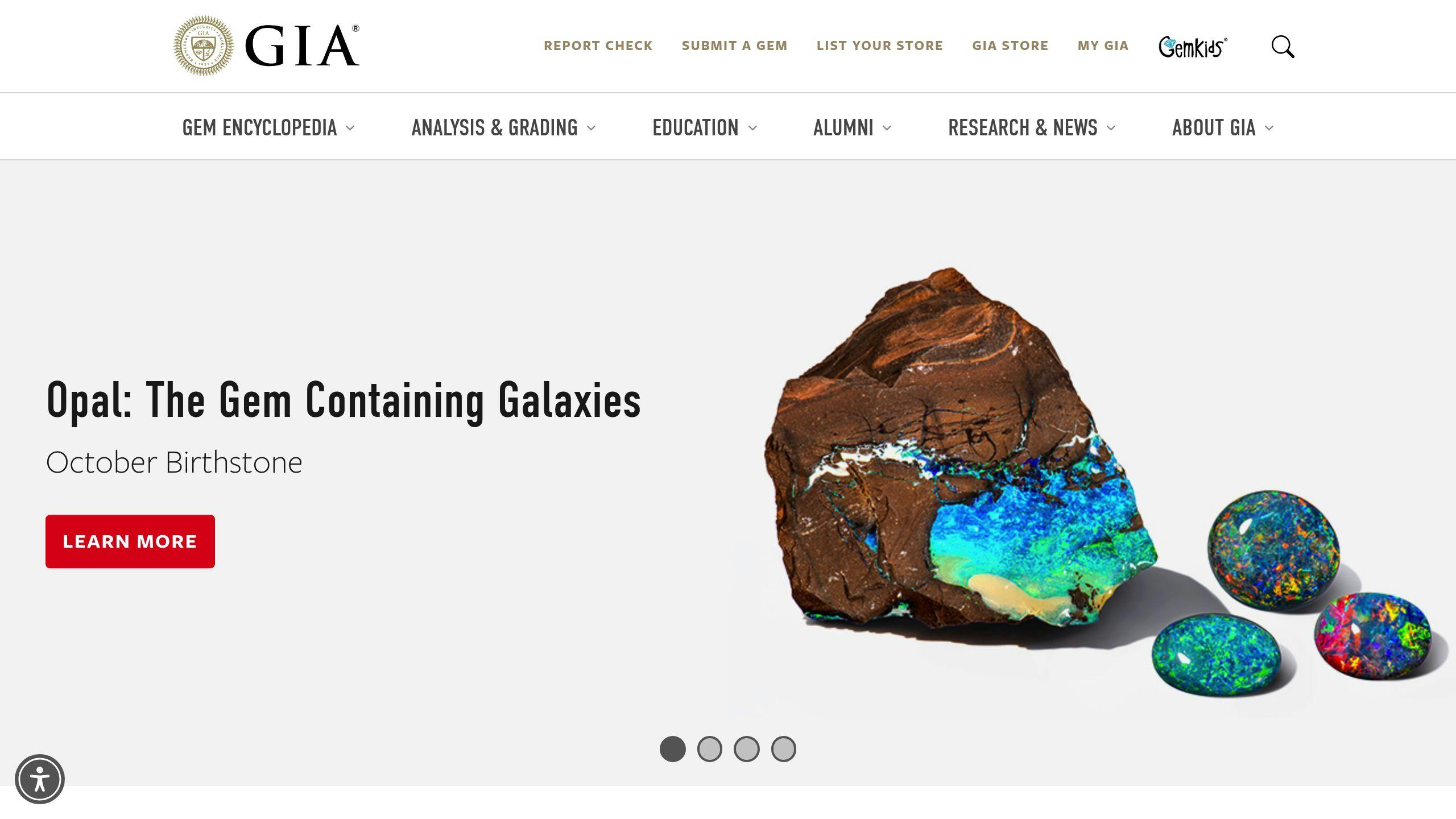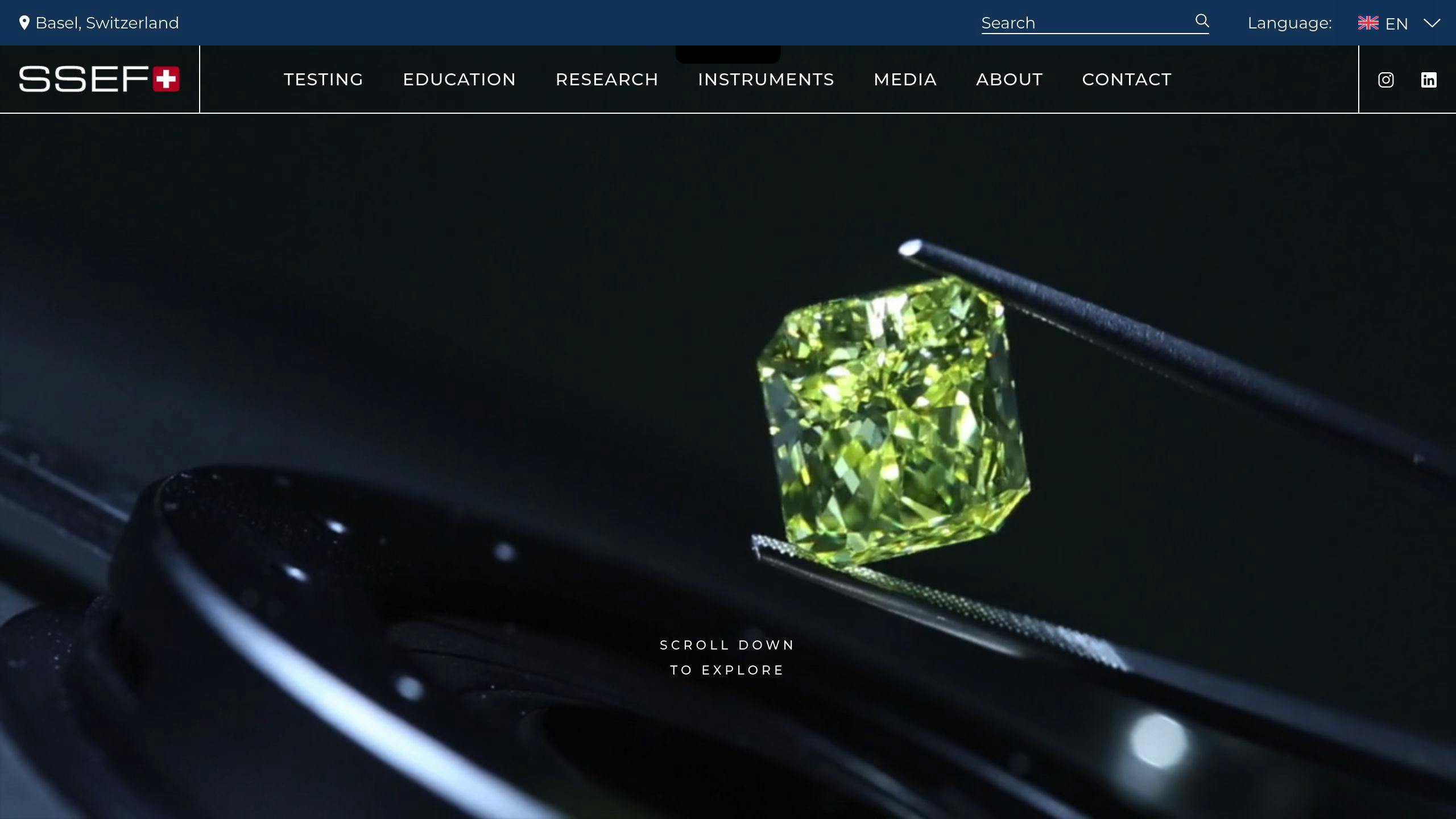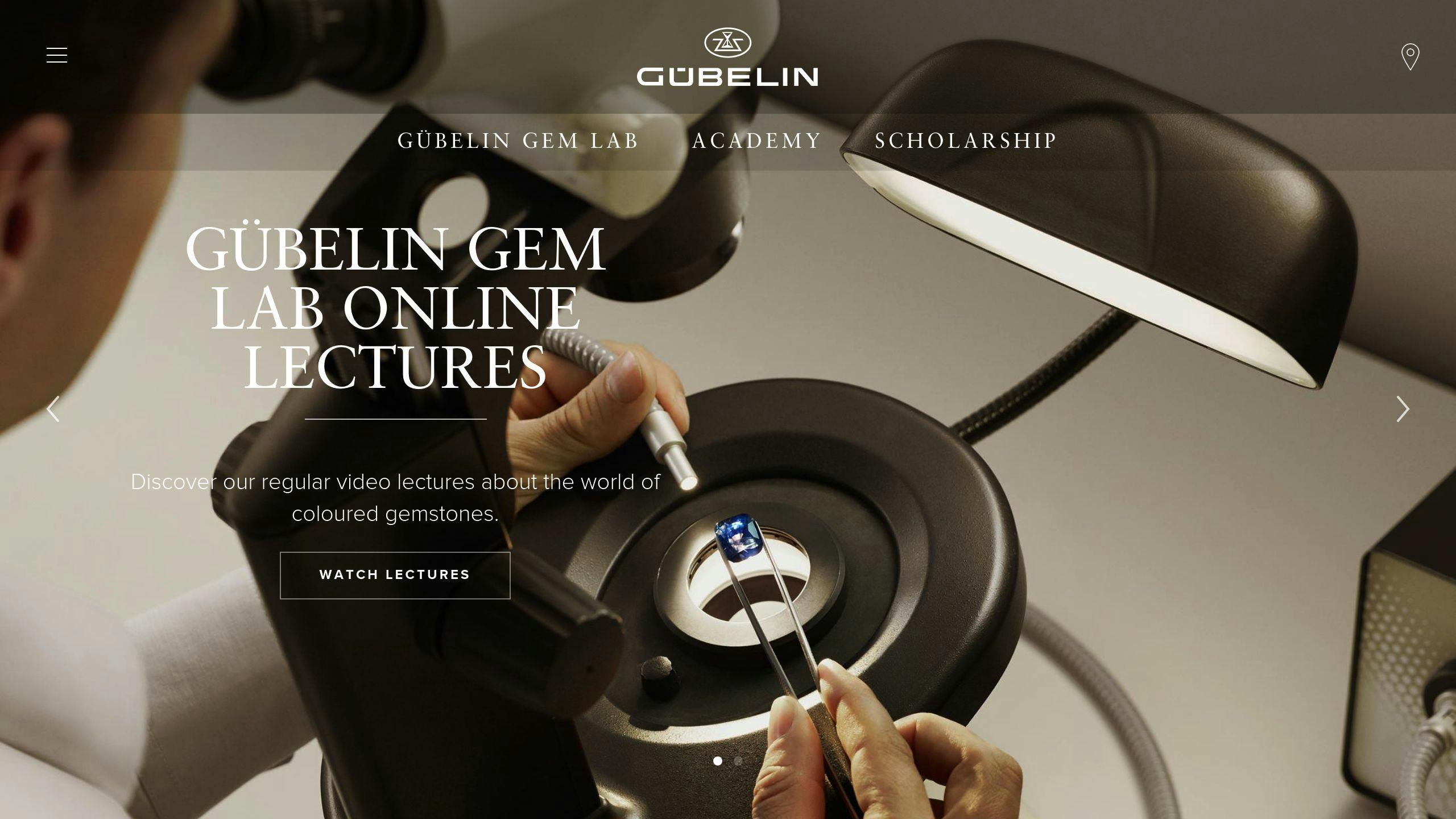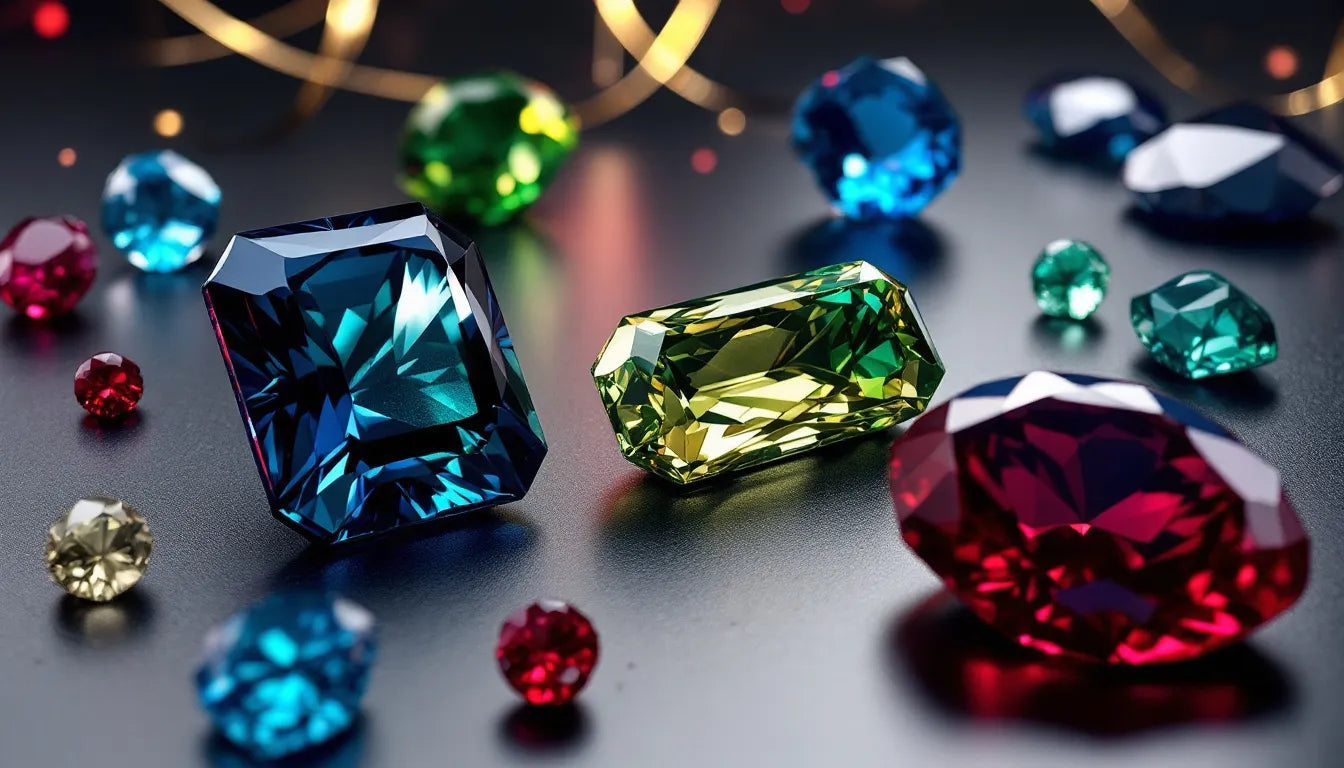Want to know if that diamond or gemstone is worth the price? Here's what gemstone certification tells you:
A gemstone certificate is your protection when buying precious stones. It's an official document from a testing lab that tells you:
| What You Get | Why It Matters |
|---|---|
| Stone details | Exact size, weight, and measurements |
| Quality grades | Color, clarity, and cut ratings |
| Treatment info | Any modifications to the stone |
| Authentication | Proof it's real, not fake |
| Origin data | Where the stone came from |
Key certification labs:
- GIA (industry standard for diamonds)
- SSEF (high-end colored stones)
- Gübelin (origin testing expert)
- IGI (faster, cheaper option)
Cost breakdown:
| Stone Size | GIA Certificate Cost |
|---|---|
| Under 0.5 carats | $32-78 |
| 0.5-1 carat | $43-121 |
| 1-3 carats | $169-331 |
Bottom line: Getting your gemstone certified costs $80-300 but protects you from fakes and helps you:
- Prove what you bought
- Get insurance coverage
- Resell for better prices
- Know exactly what you own
Think of certification as your gemstone's passport - it proves what you're getting is real and worth the money.
Related video from YouTube
Benefits of Certification
A gemstone certificate isn't just paperwork - it's your protection when buying precious stones. Here's what you need to know:
Proof of Quality
Top labs like GIA use advanced testing to grade gems. You'll get a detailed report that shows:
| Feature | What It Shows |
|---|---|
| Physical traits | Size, weight, measurements |
| Quality marks | Color, clarity, cut grade |
| Special notes | Treatments or modifications |
| Origin details | Natural or lab-grown |
Protection from Fakes
Even expert jewelers can miss things that lab testing catches. The GIA's tests help you avoid:
- Fake natural stones
- Glass passed off as gems
- Hidden treatments
- Wrong quality grades
Money Matters
Certified stones are worth more. Here's what the numbers show:
| Benefit | Impact on Value |
|---|---|
| Resale potential | 20-60% of original price |
| Insurance coverage | Easier claims process |
| Market recognition | Wider buyer acceptance |
| Quality assurance | Documented features |
"A GIA Diamond Report is a guarantee of quality. It gives you peace of mind that an unbiased third party has looked at and evaluated the gemstone for quality and authenticity." - Paul Medawar Fine Jewelry
Extra Benefits
Your certificate helps with:
- Getting insurance (most companies won't cover uncertified stones)
- Using gems as bank collateral
- Finding lost or stolen stones
- Proving ethical sourcing
At $80-300, certification costs WAY less than the protection it gives you. For expensive stones, getting a GIA or IGI certificate is a smart move.
Main Certification Labs
Here's what you need to know about the top gem grading labs:
GIA (Gemological Institute of America)

GIA is the biggest name in gem certification. Started in 1931, they're the ones who created the 4Cs system that everyone uses today.
| Feature | Details |
|---|---|
| Main focus | Created and maintains the 4Cs grading system |
| Key locations | Carlsbad, New York, Antwerp |
| Core services | Diamond grading, colored stone testing |
| Main reports | Diamond Grading Report, Colored Stone Report |
SSEF (Swiss Lab)

SSEF opened in Basel in 1974 and focuses on high-end gem testing:
| What They Do | How They Do It |
|---|---|
| Test types | Diamonds, colored stones, pearls |
| Report options | Available in 4 languages |
| Tech edge | Pioneers in sapphire testing with LIBS |
| Expert areas | Pearl age dating, DNA testing |
Gübelin Lab

Started in 1923, Gübelin is Switzerland's oldest lab:
| Feature | Details |
|---|---|
| Where they work | Lucerne, Hong Kong, New York |
| Main work | High-end colored stones |
| Who uses them | Top auction houses and dealers |
| What they test | Stone origin and quality |
Other Key Labs
Here are more labs you might hear about:
| Lab Name | Location | Main Focus | | --- | --- | | IGI | Antwerp + 20 locations | Diamond grades | | AGL | New York | Colored stones | | HRD | Antwerp | Diamond certs | | AGS | Las Vegas | Diamond grades |
"GIA stands as the world's top gem lab. Founded by Robert M. Shipley in 1931, they work to protect buyers and sellers by setting and maintaining gemstone quality standards."
Bottom line: GIA dominates diamond grading, while SSEF and Gübelin are the go-to labs for colored stones. Pick your lab based on what you're testing.
How Certification Works
Here's exactly how labs test and grade diamonds:
Testing Steps
Labs follow a strict process. Here's what happens to your diamond:
| Step | Process | What Actually Happens |
|---|---|---|
| 1. First Test | DiamondCheck™ scan | Quick test to confirm it's a natural diamond |
| 2. Prep Work | Clear case storage | Staff removes owner info to prevent bias |
| 3. Weight Check | Digital scale | Gets exact weight down to 0.00001 carats |
| 4. Color Grade | Expert review | Multiple graders must agree on final grade |
| 5. Clarity Test | Microscope check | Graders map out flaws at 10x zoom |
| 6. Cut Score | Computer scan | Measures every angle and proportion |
"We use 10x magnification and multiple Graduate Gemologists to check each diamond's 4C's: carat, color, clarity, and cut." - GIA Official Documentation
What's in the Report
Your certification includes:
| Section | Details You Get |
|---|---|
| ID Number | Links to lab's master copy |
| Basics | Diamond shape and size |
| Main Grades | Weight, clarity, color, cut scores |
| Finish | Polish and symmetry ratings |
| Extra Notes | Glow under UV, any treatments |
| Tech Specs | Maps showing angles and marks |
| Anti-Fake | Holograms and security codes |
Want something simpler? For diamonds between 0.15-1.99 carats, GIA offers a Diamond Dossier® with laser marking. Prices start at $64 for a 0.5-carat stone and go up to $105 for a 1-carat diamond.
"We use multiple graders, including senior staff checks, for every diamond." - GIA Laboratory Services
At least four trained experts check each stone at GIA. Senior staff double-check everything to keep standards high.
Reading Certification Reports
A gemstone certificate packs key details about your stone in an organized format. Let's break down what you'll find and how to understand it.
Basic Report Details
Here's what you'll spot in every certificate:
| Section | What You'll Find |
|---|---|
| Report Number | Unique ID that links to lab records |
| Issue Date | Exam date |
| Stone Type | Diamond, sapphire, ruby, etc. |
| Shape & Style | How it's cut and shaped |
| Measurements | Size in mm |
| Weight | Exact carats |
| Security Features | Holograms, QR codes, watermarks |
Quality Ratings
Different labs use different scales. Here are the main ones you need to know:
| Rating Type | Scale Details | What It Means |
|---|---|---|
| Color (Diamonds) | D to Z | D is whitest, Z shows color |
| Clarity | FL to I3 | FL means perfect, I3 means lots of flaws |
| Cut Grade | Poor to Excellent | How well it sparkles |
| Treatment Codes | Letters (N, E, H, etc.) | N means natural, H means heat treated |
For colored stones, AGL uses these scales:
| Grade Type | Rating Range | What It Means |
|---|---|---|
| Color | 1-10 | 1-2 are best, 9-10 need work |
| Tone | 0-100 | 0 is lightest, 100 is darkest |
| Clarity | FI to E3 | FI is clean, E3 has many flaws |
"Every diamond gets multiple sets of eyes, including senior staff checks, to keep our GIA certificates consistent." - GIA Laboratory Services
When you get your report:
- Match the report number to your stone
- Check for any treatments
- Compare the size measurements
- Read the special notes
- Check security features
Here's how GIA ranks diamond color:
| Grade Group | Letters | Price Range |
|---|---|---|
| Colorless | D, E, F | Most expensive |
| Near Colorless | G, H, I, J | Mid-high range |
| Faint Color | K, L, M | Mid range |
| Very Light | N through R | Lower range |
| Light | S through Z | Lowest price |
sbb-itb-d0b3b91
Costs and Time
Let's break down what you'll pay for GIA certification and how long it takes.
Here's what GIA charges for different diamond reports:
| Report Type | Carat Range | Fee (USD) |
|---|---|---|
| Full Diamond Report | 0.15 - 0.46 | $53 - $59 |
| 0.47 - 0.99 | $64 - $78 | |
| 1.00 - 1.99 | $105 - $121 | |
| 2.00 - 4.99 | $169 - $331 | |
| 5.00 - 9.99 | $470 - $656 | |
| Diamond Dossier | 0.15 - 0.29 | $32 - $34 |
| 0.30 - 0.49 | $40 - $42 | |
| 0.50 - 0.99 | $43 - $53 | |
| 1.00 - 1.99 | $85 - $110 | |
| eReport | 0.15 - 0.49 | $32 - $38 |
| 0.50 - 0.99 | $39 - $48 | |
| 1.00 - 2.99 | $80 - $152 |
Want to save money? Go for a Diamond Dossier if your stone is under 1 carat. You'll get the key info at a lower price than a Full Report.
For lab-grown diamonds, GIA has dropped their prices. A 1-carat stone report now costs $55 instead of $85, and you still get complete 4Cs grading.
Here's how long the process takes:
| Stone Size | Processing Time | Rush Option Available |
|---|---|---|
| Under 1 carat | 11-14 days | Yes |
| 1-2 carats | 14-21 days | Yes |
| Over 2 carats | 21+ days | Limited |
| Colored stones | 14-21 days | Varies by stone |
Processing speed depends on:
- What type of stone you have
- How busy the lab is
- Which service level you pick
Pro tip: Check the lab's current workload before sending in your stone. Wait times can change throughout the year.
Note: These prices are in USD and apply to untreated white diamonds. Different rates may apply for colored or treated stones.
Picking the Right Certificate
Here's what you need to know about gemstone certificates - from the labs that issue them to how they affect your wallet.
Lab Comparison
| Lab | Best For | Why Choose It |
|---|---|---|
| GIA | Natural diamonds | Sets the standard for 4Cs grading |
| AGS | Fancy shapes | Most detailed cut analysis |
| IGI | Lab-grown diamonds | Quick results, lower fees |
| Gübelin | Colored stones | Pinpoints stone origins |
| SSEF | High-end gems | Spots treatments others miss |
Price vs. Value
Different labs impact your stone's price tag:
- GIA certificates bump up diamond prices by 10%
- IGI costs less but tends to grade more generously
- AGS cut grades can boost fancy diamond prices
Smart Money Moves
Want to save cash without cutting corners? Here's how:
- Go with IGI for diamonds under 0.5 carats
- Pick GIA for engagement rings
- With IGI stones, stick to E color or better
- Choose AGS when cut grade is your top priority
Quick Lab Checklist
Before picking a lab, check that it:
- Has a solid reference collection
- States all treatments clearly
- Employs certified gemologists (G.G. or F.G.A.)
- Has tested stones for 5+ years
Pro tip: Got an old certificate? You might need a new one. Testing methods keep getting better, and recent certificates give you the most accurate picture of what you're buying.
Caring for Certified Stones
Your certified gems need proper storage and maintenance. Here's what works:
Safe Storage
Different stones need different storage methods. Here's a simple breakdown:
| Gem Type | Storage Method | Special Care |
|---|---|---|
| Tough (Diamond, Ruby, Sapphire) | Velvet-lined case or pouch | Store separately |
| Medium (Aquamarine, Garnet) | Plastic container with dividers | Keep out of sun |
| Delicate (Emerald, Opal, Pearl) | Soft cloth bag | Opals: add damp cotton; Pearls: need air flow |
Keep your paperwork safe:
- Put certificates in a fireproof safe
- Save document copies to the cloud
- Use anti-tarnish bags for silver pieces
- Look at settings twice a year
Updates and Insurance
Here's when to maintain your stones:
| Timeframe | Action | Why It Matters |
|---|---|---|
| Every 2 weeks | Clean at home | Gets rid of daily grime |
| Every 6 months | Visit a jeweler | Checks for loose stones |
| Every 1-3 years | Restring pearls | Stops breaks before they happen |
| Every 2-3 years | Get new appraisal | Keeps insurance up to date |
For insurance, you'll need:
- Current appraisals (costs $50-150 per hour)
- Records of any gem treatments
- Original purchase receipts
- Clear photos of each piece
"Regular wear will keep silver shiny, but you can also use a jeweler's polishing cloth for tarnished pieces", advises GIA's cleaning guidelines.
Keep your gems clean:
- ✓ Warm water + mild soap works best
- ✓ Use a soft brush
- ✗ Skip ultrasonic cleaners for treated gems
- ✗ Don't use harsh chemicals or high heat
What's Next in Certification
Labs are changing how they grade and track gems. Here's what's happening:
New Tools and Methods
AI and machine learning are transforming gem testing. Check out these numbers:
| Technology | What It Does | Success Rate |
|---|---|---|
| AI Grading Systems | Grades diamond clarity | Handles 70-80% of yearly diamonds |
| Gemtelligence | Spots natural vs lab diamonds | 97% accuracy for natural, 100% for lab-grown |
| Digital Refractometers | Measures refractive index | Reduces errors |
GIA and IBM are teaming up on these tools to speed up grading without damaging stones.
Digital Options
In 2023, GIA switched to digital-only reports for diamonds between 0.15 and 2.99 carats. Here's what changed:
| Feature | Before | Now |
|---|---|---|
| Format | Paper certificate | QR code + digital report |
| Access | Physical only | Online viewing |
| Storage | Physical storage needed | Cloud backup |
| Sharing | Mail or hand-deliver | Instant online sharing |
Blockchain tech is making gem tracking better:
- Everledger tracks 2+ million diamonds
- De Beers' Tracr handles 50% of their output
- Provenance Proof Blockchain manages 4 million gems
"Enhanced transparency around a diamond's provenance supports retailers to speak in more detail and with increased confidence about the positive impact of natural diamonds, as they can see that diamond's journey from source to store." - Wesley Tucker, CEO of Tracr
This digital shift helps prevent fraud and makes gem tracking simple. GIA wants all reports to go digital by 2025.
Summary
Here's what gemstone certification tells you about a stone:
| Aspect | Impact on Value |
|---|---|
| Origin | Mogok Valley rubies sell for 10-100x more than stones from Mozambique/Zambia |
| Treatment | Natural stones cost more than treated ones |
| Lab | GIA, SSEF, Gübelin lead the market |
| Reports | Digital format with QR codes since 2023 |
When you buy a certified gem, you get:
| Feature | What It Does |
|---|---|
| Independent Testing | Shows real quality |
| Source Checking | Links price to origin |
| Treatment Checks | Shows if stone is natural |
| Digital Proof | Quick checks anywhere |
Let's talk money:
- A Paraíba tourmaline? Up to $20,000 per carat
- Natural Burmese rubies with "Pigeon Blood" color? 10-100x more than other sources
"When retailers know a diamond's full story from mine to store, they can better explain its value and impact to customers." - Wesley Tucker, CEO of Tracr
Here's what top labs do:
| Lab | Main Job |
|---|---|
| GIA | Grades 0.50ct+ diamonds |
| IGI | Checks all 4Cs |
| SSEF | Focuses on colored stones |
| Gübelin | Finds stone origins |
Digital tracking is taking over:
- Everledger tracks 2+ million diamonds
- De Beers' Tracr handles half their output
- Provenance Proof manages 4 million gems
The industry's going digital - just look at GIA's switch to online-only reports for diamonds between 0.15 and 2.99 carats. It's making gem buying safer and more trustworthy.
FAQs
How much does it cost to certify a gemstone?
Here's what you'll pay for gemstone certification:
| Stone Type | Size Range | Cost Range |
|---|---|---|
| Diamonds | 0.15 - 0.49 ct | $32 - $78 |
| Diamonds | 0.50 - 0.99 ct | $43 - $121 |
| Diamonds | 1.00 - 2.99 ct | $169 - $331 |
| Diamonds | 3.00 - 9.99 ct | $470 - $1,067 |
| Diamonds | 10.00+ ct | $1,309+ |
| Colored Gems | All sizes | $100 - $300 |
You'll need to pay more for:
- Adding laser inscriptions
- Getting faster service
- Special handling requirements
Who can authenticate gemstones?
These are the main labs that test and certify gems:
| Lab | Location | Main Focus |
|---|---|---|
| GIA | Global | Diamonds and colored stones |
| SSEF | Switzerland | High-end colored gems |
| Gübelin | Switzerland | Origin testing |
| IGI | Global | Mass market diamonds |
| Danat | Bahrain | Pearls and gems |
| AnchorCert | UK | All gemstones |
GemLab's system stands out by giving each stone its own Gem Identification Number (GIN). You can use this number to check your gem's details online.


Leave a comment